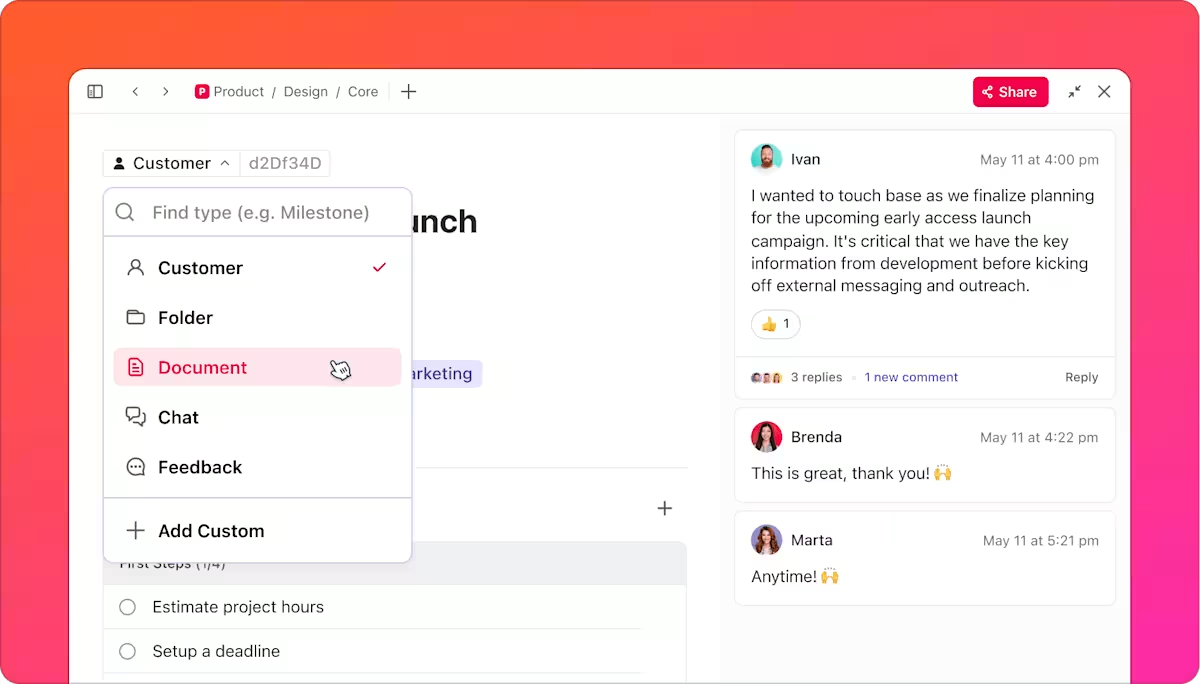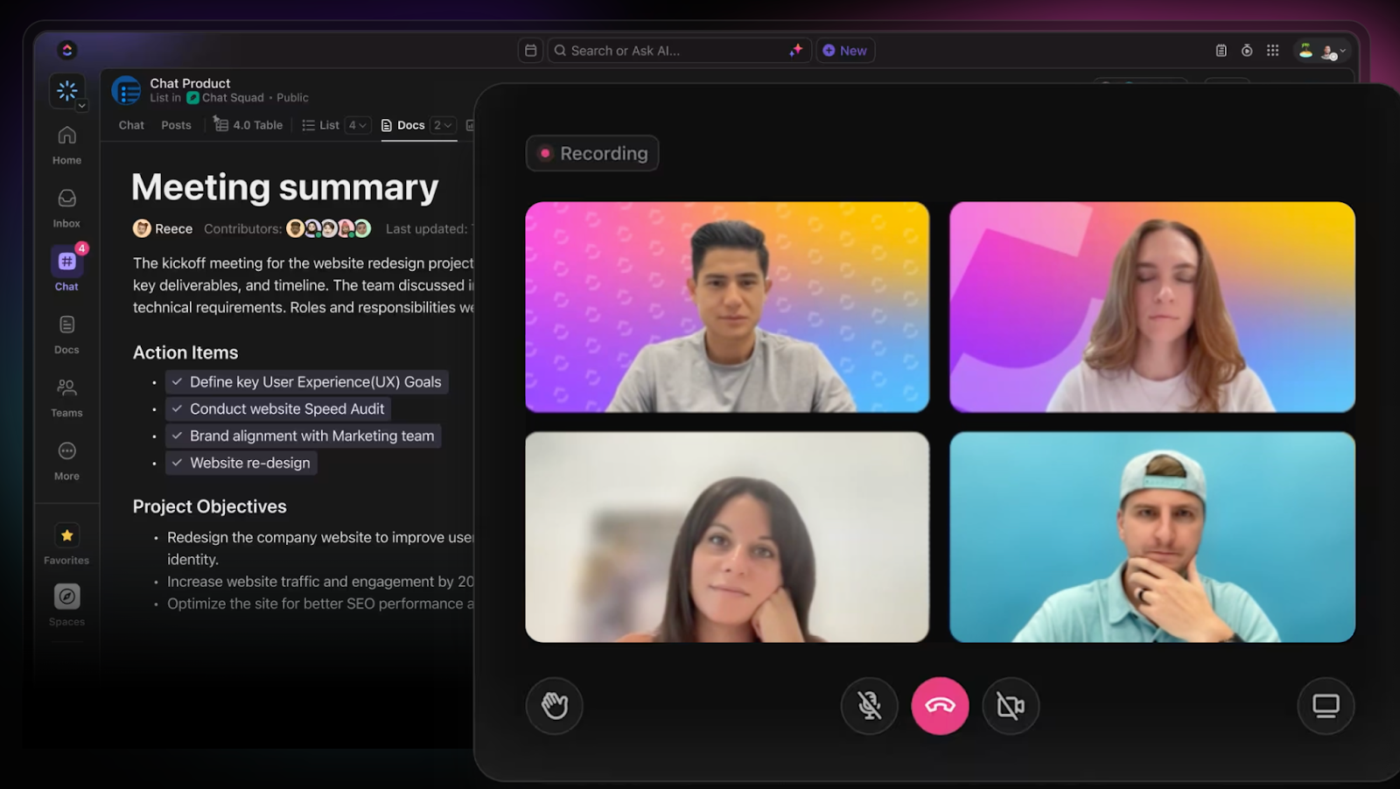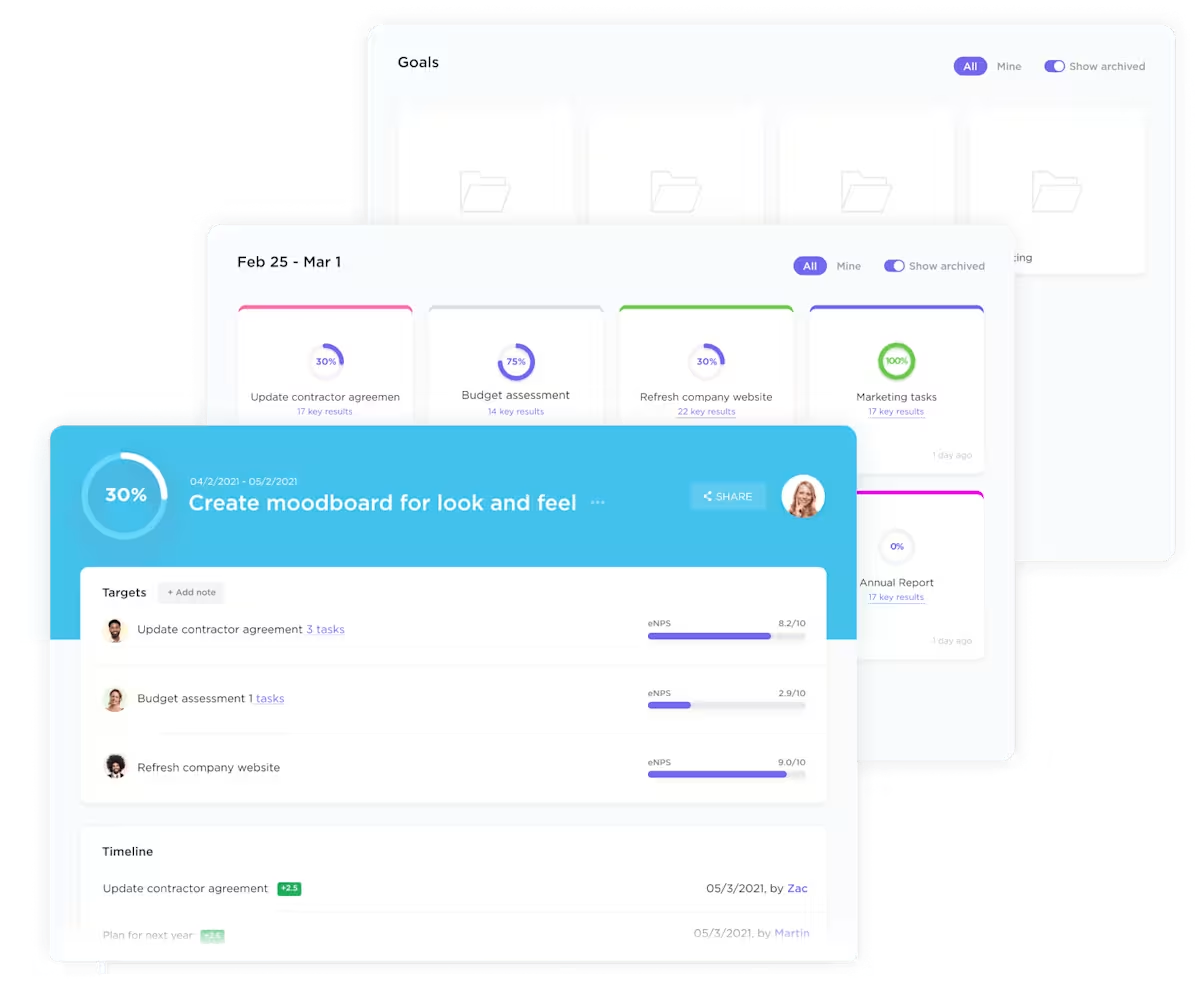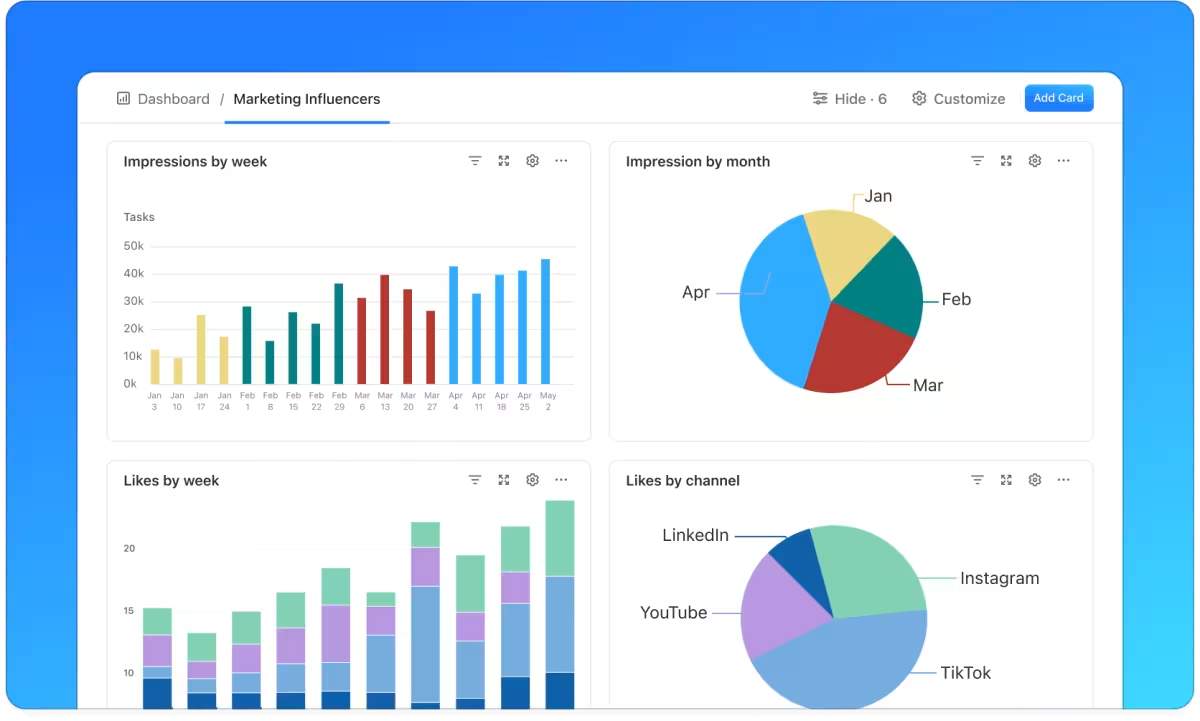Annual Planning Strategies for Business Leaders

Sorry, there were no results found for “”
Sorry, there were no results found for “”
Sorry, there were no results found for “”
As the popular military adage, also known as the 7Ps, goes,
Proper prior planning prevents p*** poor performance.
While not every organization follows the army’s unity of command or has a singular clearly-defined adversary to overcome, the importance of planning is universal. Especially for modern businesses where the future outlook of a business is limited to a dozen years.
An EY study says that the average lifespan of a US S&P 500 company 80 years ago was 67 years. Today, it’s a meager 15! Essentially, if you made a fifteen-year plan for a one-year-old company, you might not even get to use it!
As the world evolves rapidly, technology becomes legacy in months, and customers demand new experiences. Plans need to strike the right balance between reliability and adaptability.
In this blog post, we explore how you can use various annual planning strategies to achieve exactly that!
If you only have 60 seconds to learn about annual planning, here’s a quick summary:
Annual planning is the organizational process of setting up the goals, activities, and resources for the upcoming year. Typically initiated by the financial prerogatives of shareholder reporting and compliance, annual planning has expanded to offer more wide-ranging benefits.
A good project plan contains the following:
For effective annual planning, consider the following steps.
Now, let’s get into the nitty-gritty details.
The idea of annual planning sounds rather obvious—you make plans for the next year. 🤷 Except it isn’t as simple as that. Depending on your business, the size of the organization, and the market you’re in, the nature of annual planning can vary widely. Let’s see how.
Annual planning is the process of outlining the goals, activities, milestones, budgets, and resources for the upcoming twelve-month period. Some of the defining characteristics of annual planning are as follows.
In business management, strategy, plans, tactics, and a combination of those words are often used interchangeably—resulting in unnecessary confusion. So, before we get into the details of annual planning, let’s disambiguate that from ‘strategic planning.’
In an episode of the HBR podcast titled “A Plan is Not A Strategy,” Roger Martin, former dean of the Rotman School of Management at the University of Toronto, says:
A strategy is an integrative set of choices that positions you on a playing field of your choice in a way that you win…Strategy has a theory.
So, much of the strategic planning process is about creating the theory, i.e., making the big decisions about why you do what you do, who your customer is, what makes you better than your competition, etc. Some of these strategic planning templates will give you a better idea.
On the other hand, the yearly planning process is about the execution of said strategy over the course of the next twelve months.
| Strategic planning | Annual planning | |
|---|---|---|
| Timeline | Longer-term (3/5/10 years) | Medium-term (a year) |
| Purpose | Defining the foundations of the business and its existence | Outlining the actions to be taken and the resources needed for it |
| Impetus | Market positioning and vision | Financial planning and reporting |
| Alignment | To overarching business direction and long-term vision | To the organizational strategy and goals |
💡Pro Tip: Check out our yearly goals template here.
Though not entirely strategic in nature, annual planning occupies a very important place in an organization’s lifecycle for several reasons.
Effective annual planning is the roadmap for the business’ journey over the next twelve months. With it, every member of every team knows the destination, milestones, and the path toward them. This offers multiple benefits, such as:
Direction: An effective annual planning process sets the direction for the entire organization. It ensures that every individual is aligned with the team’s plan, which is in line with the department’s, and so on.
Clarity of action: A good annual plan outlines what needs to be achieved and how. It eliminates ambiguities around how organizational goals are achieved.
For example, if customer growth through acquisition is the goal, the annual plan outlines the various activities, such as events, advertising, content marketing, etc., along with the budgets and resources for each.
From here, the teams have clarity over their tasks for the year.
Accountability: An annual plan assigns responsibility for various objectives and outcomes to specific individuals. This encourages personal and team accountability.
Measurability: An annual plan is critical to measure the success of the organization. It is the benchmark against which the performance is evaluated at the end of the year.
Resource optimization: Allocation of budgets, staff, tools, and other resources becomes effective if they are in the interest of a robust plan.
Risk management: Essentially, an annual plan is also a risk mitigation strategy. It helps leaders reasonably predict the risks that might arise in the next year (or further) and build mitigation measures today.
To reap the above benefits and be effective, a plan needs to have a specific structure. Let’s explore that in detail.
A successful annual plan needs to be comprehensive without being too prescriptive. It needs to cover the following elements in some detail.
The annual planning exercise begins by setting goals and objectives. It sets the priorities of the business in order so teams can focus their efforts accordingly. Here are a few goal examples for 1/5/10 years to get you started.
Budgets, in an annual plan, set the financial guardrails. They offer the constraints of financial, technical, and talent resources with which teams need to achieve their goals.
When the organization’s annual plan trickles down to departments, teams, and individuals, it also outlines the activities each of them needs to perform.
An annual plan also outlines the roles and responsibilities of everyone involved, with their goals and expectations. During the planning stage, if the right resources aren’t there, it makes room for hiring.
For instance, if you have plans to dramatically increase product development, you might need more engineers. The annual plan will ensure the financial team has the budget, the talent team has the mandate, and the hiring managers are ready to interview and hire.
This section of the annual plan outlines the process by which progress will be tracked throughout the year. How do you know if you’re on track to achieve your goals? Key performance indicators (KPIs) and review mechanisms, of course!
These growth plan templates offer useful examples of how these components work in tandem.
A good plan also offers ideas for what to do when things don’t go as planned. Essentially, this component covers the alternative courses of action in case Plan A doesn’t work.
With that context set, let’s see how you can put your annual planning into practice.
As we’ve seen before, the annual plan is a roadmap for the entire organization. It brings everyone together toward common goals. Creating such a plan needs a comprehensive approach, such as the one we describe below.
Before making any plans, conduct a thorough review of last year’s performance. Look at the following.
Collect both quantitative and qualitative data. Gather the numbers, but also collect opinions about why and how.
For instance, don’t just ask what last year’s sales were. Also ask why you did/didn’t meet the sales target, what worked, how did the top performers meet their quotas, etc.
Use this information as the foundation for your next year. If your conversions from the in-person events channel were better than webinars, you’d do well to allocate more budgets to the former. Or if the content channel did not produce any results at all, you might want to reconsider the goals you had set and whether they were indeed appropriate.
Such a review will also provide a clear closure of the previous year and a fresh start to the new year.
Using the last year’s review as the overall context of the business, it’s time to set goals.
Make your goals specific, measurable, achievable, relevant, and timely. Instead of setting goals as “acquire customers,” make it SMART: Increase customer acquisition by 5% month-on-month through online advertising channels.
First set the top-most level goals, say for the entire organization. Then, break them down level by level. If the organization’s goal is to acquire new customers, it would be broken down into:
Departmental goals: Marketing goals would be around increasing impressions, site traffic, and conversions; talent acquisition goals would be to hire more sales team members; customer success goals would be around getting additional referrals, etc.
Team goals: The marketing teams would then break them down further. The search advertising team would create budgets for each channel and design their campaigns. The content team would plan their assets for lead generation. The social media team will plan to increase impressions, perhaps with influencer relationships.
Individual goals: Based on the team’s expected outcomes, each individual team member would set theirs, like the number of articles each writer would create or the conversion goals for each campaign.
With the goals set, it’s time to figure out ways to achieve them, i.e., make project plans.
Structure your projects: Break down your activities into simple, manageable projects. You can build your projects around content creation, social media distribution, email newsletters, etc. You can also create projects for each campaign, event, or milestone.
Here are some project plan templates to give you a jumpstart.
Create tasks: Fill in your projects with tasks.
For example, for each campaign as a project, you might have tasks for:
Manage execution: Assign these tasks to the right individuals. Set start dates and deadlines. Mark dependencies, if any.
If you’re using time-tested documents and spreadsheets for your annual planning, you can’t be faulted for it. However, today, there are far more efficient and powerful tools to help with annual planning.
An annual plan is essentially a collection of interconnected projects toward common goals. A good project management tool, like ClickUp, can help you see the big picture without missing out on the granularities.

With ClickUp Tasks, you can create project roadmaps, set up tasks, assign users, set deadlines, estimate and track time, and add priority or tags. Set up custom statuses that suit your workflows. Add reusable checklists and apply them automatically to specific kinds of tasks. Connect similar tasks or add milestones.
Effective execution of annual plans needs the ability to communicate easily in real-time. ClickUp offers multiple ways to do this in context. For starters, you can have conversations as nested comments within each task.
For more real-time, dynamic conversations, try ClickUp Chat. Have conversations around specific projects’ channels. Connect tasks to your conversations and make it easy for your colleagues to navigate. Start one-click calls from within ClickUp; automatically create summaries and action items.

The simplest way to achieve your goals is to keep them visible and accessible at all times. ClickUp Goals is a powerful goal-tracking app that enables all this and more.

Set up clear targets to track your wins. This could be task targets (like the tasks in a sprint or campaign), number targets (like number of articles one must write), monetary targets (like revenue dollars) or true/false targets (like whether an event venue is booked or not).
Manage all your goals in one place, organize them in folders, and visualize collective progress.
So far, we’ve been talking about planning. It’s time to go one step further and discuss implementation.
To begin with, bring all your team members together on the project management platform.
Train them on using it effectively with standard operating procedures for:
To continue the context from the previous year(s), it is important to consolidate some of the data. To do this:
Create a simple and actionable way to track performance through the course of the year. ClickUp Dashboards enable you to visualize data across multiple fronts.

Instantly visualize all project-related data within ClickUp, such as tasks, workloads, timesheets, billable hours, and individual productivity. Integrate dozens of third-party apps to create consolidated dashboards, such as sales reports, CRM visualizations, marketing campaign performance, etc. Each individual user can set up personal dashboards to measure their own performance as well.
Last, but not least, use this data to adapt your plan through the course of the year. Realign budgets, reallocate resources, or adjust activities to stay on track toward your goals. For a quicker start, use operational plan templates to structure your implementation.
A good yearly plan is a number of moving parts. This can be challenging to maneuver without the right support.
Here are the most common project management challenges you might come across in your annual planning and ways to overcome them.
Inaccurate forecasting: Sometimes, teams overestimate what they can achieve in a year. So, they forecast everything, including budgets, resources, and activities inaccurately.
To avoid this, forecast based on existing data. Be reasonable in your projections and err on the side of caution.
Misalignment: Every individual, team, and department needs to align their goals with the organization’s. More importantly, it also needs to be in service of the overall business plan. When this doesn’t happen, it becomes a huge challenge.
The simplest way to overcome this is by using planning methods like objectives and key results (OKR) or balanced scorecard. This helps keep the goals and activities of everyone aligned toward the same goal.
Bonus: Free business plan templates for you to work with.
Budgetary constraints: It is extremely rare for every team to get the budgets they ask for. This means that teams need to achieve their goals with the budgets they have.
To do this, run some simulations. Consider various combinations of budget allocation before choosing the best one.
Time management: Let’s face it. Planning takes time. While you’re already overloaded with everyday work, setting aside time for planning for the future can be a big ask.
Overcome this challenge by creating contingency times as part of the plan. Make sure you leave a couple of weeks in December free in your annual plan for next year’s annual business planning.
Business leaders can play a key role in helping teams overcome these challenges.
A good leader understands that the teams are closer to reality and have more grounded knowledge of business matters.
So, instead of being an instructor or a planner, the leader plays the role of a driver and facilitator of annual planning.
Whether you’re leading a military regiment or a team of marketing interns, a good plan is the foundation of good performance. It helps everyone know what needs to be done, why, how, by when, by whom, and to what standard. It moves the business forward.
This is why organizational planning is a critical part of every business leader’s job role. It is a way for you to set direction and guide the team.
However, one of the biggest mistakes you can make is to think of annual planning as a one-time activity. Though the strategic plan is typically created at the beginning of the year, you need to oversee its implementation throughout the twelve-month period.
To do this, you need a robust planning and project management platform like ClickUp. With powerful task management, documentation, analytics, AI features, and easy-to-use templates, ClickUp offers everything you need to implement your annual plans. Try ClickUp for free today.
© 2025 ClickUp